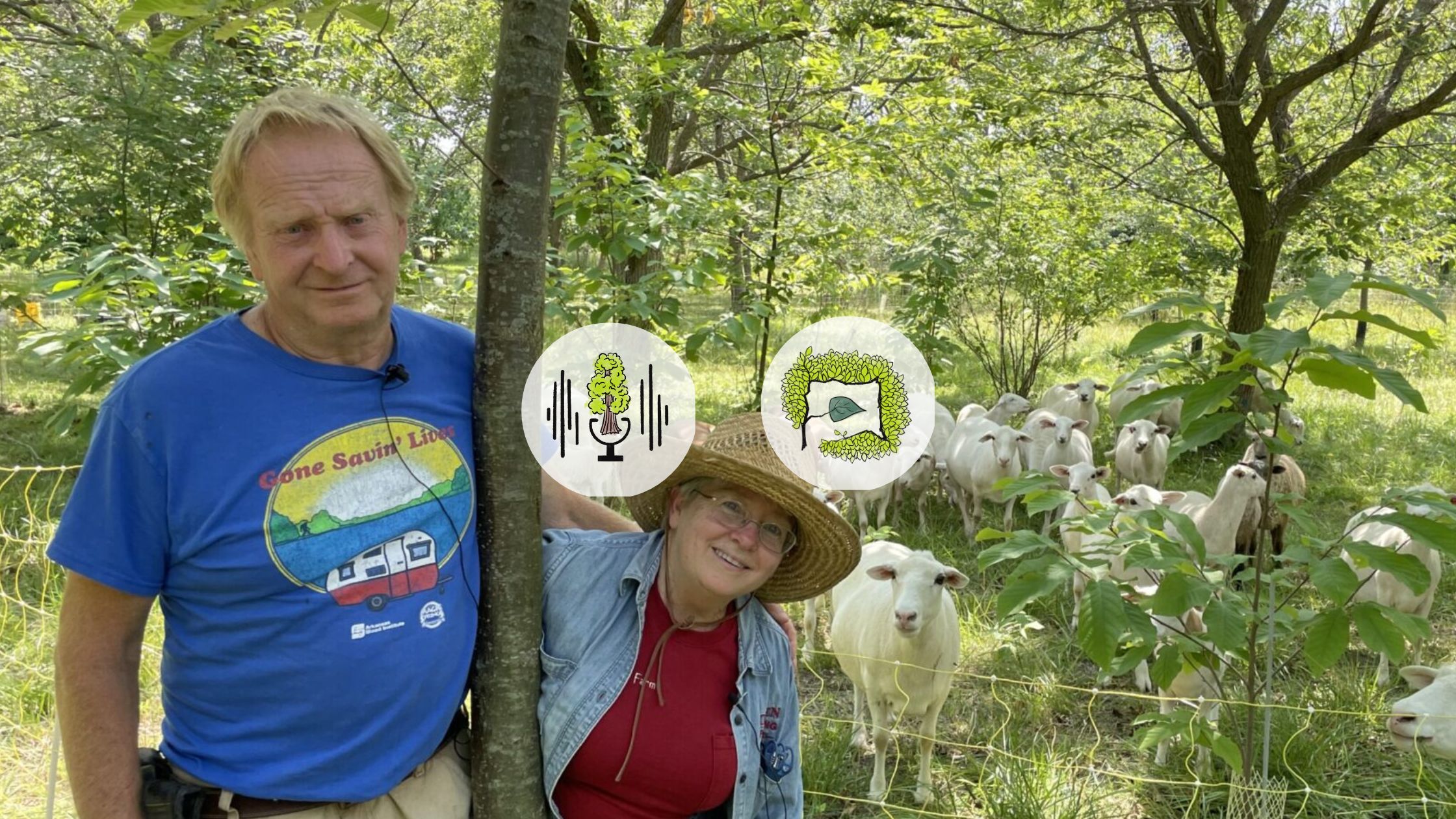Tom Wahl and Kathy Dice, owners and operators of Red Fern Farm in southeastern Iowa, have been managing a hyper-diverse agroforestry system on their farm for decades. Podcast host Jacob Grace visited Red Fern Farm in July of 2023 to ask Kathy and Tom what they see as the top three mistakes an agroforester can make.
Content has been edited for brevity and clarity.
Jacob: What do you see as the top two or three biggest mistake someone can make when they’re doing agroforestry?
Tom: The biggest mistake you can make is:
#1: Failure to select the right crop for a site, or to select the right site for a crop.
Things like soil type, climate, hydrology, and topography all have to be considered before planting anything. If you get that part wrong, you’re going to waste a lot of time and money, and might not survive financially to try a second time.
Kathy: Didn’t you hear of someone who ordered thousands of dollars worth of apple trees and he hadn’t checked his soil type yet? That’s not a good idea!
Tom: Yea, in fact I asked him what kind of soil he was planting them on, and he said “What do you mean? There’s different kinds of soil?” But by pure luck, the property he bought just happened to have the best soil in the world for growing apple trees. But it was not by planning, it was pure luck.
Kathy: So, site selection is number one. Then after that would be:
#2. Failure to do adequate weed control.
Tom: Yes. Some people mistakenly believe that doing things like mowing around the tree are enough weed control, and it’s not.
What I’ve found over the years is that there are two main strategies for weed control that work, if you want every tree to survive. And if you’re planting expensive nursery stock, you want every tree to survive. One method is to use a combination of landscape fabric or weed barrier on the ground, held down with plenty of staples, and then topped with a few inches of wood chip mulch. The other option is to use herbicide, and my herbicide of choice is sulfometuron methy, which goes by the trade name Oust.
The last general category of serious mistakes is:
#3. Failure to protect trees from animals.
Our biggest nuisances are deer and rabbits. We absolutely can’t plant trees without protecting them from deer and rabbits. They will kill every last one if given the chance. What we’ve had the most success with is 5-foot tree tubes, held in place with a fiberglass stake. These tubes have other benefits too, like causing trees to self-prune below 5 feet, and by speeding up their growth. They can also help prevent livestock from browsing on trees, although they don’t necessarily stop larger animals from rubbing on them or breaking them off.
Kathy: (to nearby sheep) Would you kill a tree?
Tom: There’s one rubbing on a paw paw right now.
You can hear the full conversation with Tom and Kathy on the Perennial AF podcast!

